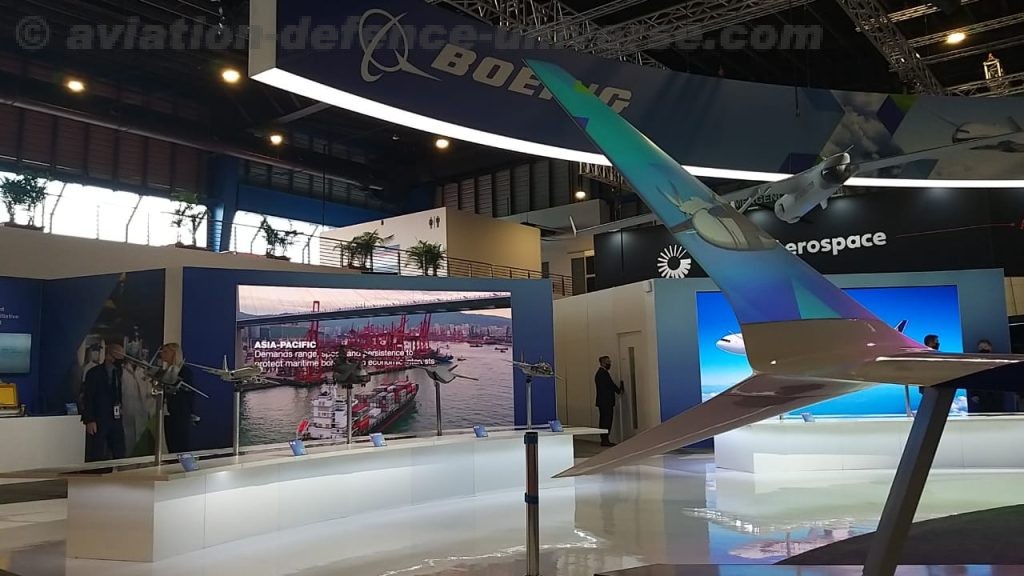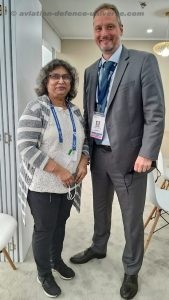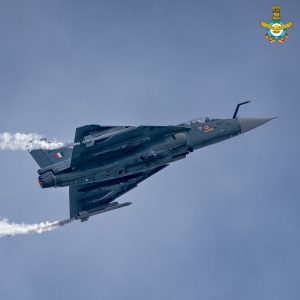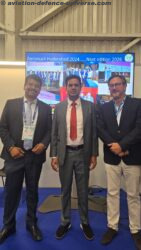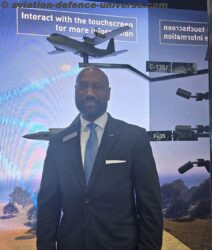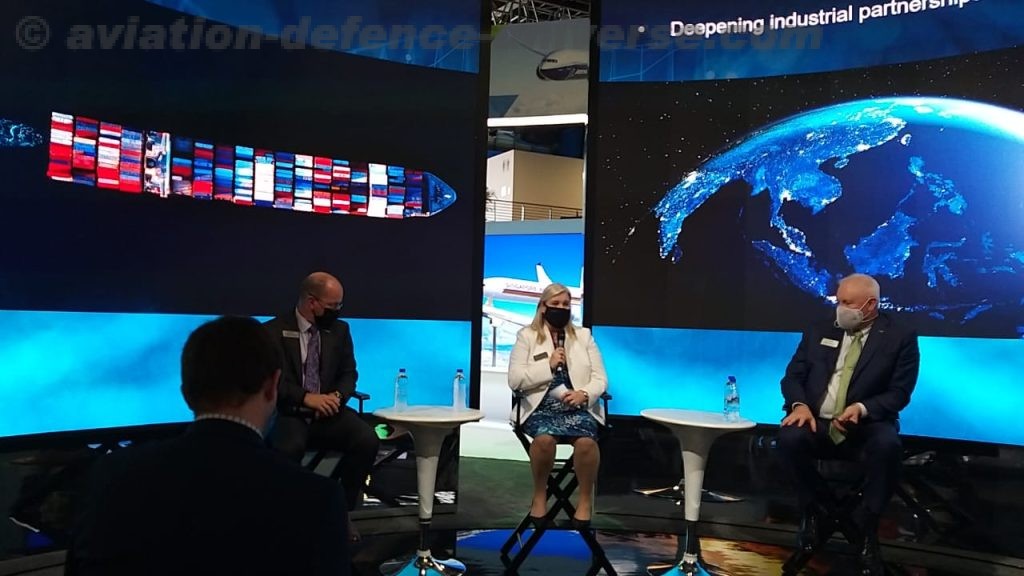
- Media interaction at Singapore Airshow reiterates this
By Sangeeta Saxena
Singapore. 17 February 2022. US aviation major Boeing is as always in it’s traditional fervour at the Singapore Airshow. The top level management with regional heads are all there at the show, signifying the importance of the region both as an existing and a prospective market for the OEM.
Boeing predicts $70B worth opportunities over the next five years in the Asia-Pacific region. A growing demand for ISR capabilities, in a region which is geo-politically volatile, Boeing has solutions tailormade for these requirements and has offered them to the countries of the region at the show. Right from F-15 to P-8 to KC-46 to Apache are at the static display and some are also demonstrating in the air.

In a media interaction at the show Mark Ballew, Senior Director, Business Development, International Government and Defense for Boeing reiterated, “Customers across Asia-Pacific have placed their trust in Boeing to sustain and upgrade their fleets, support high operational readiness rates, expand parts availability, and maximize partnerships with local industry. All of those goals are key elements of our Boeing Global Services business, and we are proud of the work with are doing with our customers and our in-country industrial teammates.”
He added that Boeing is on a continuous drive to expand partnerships with suppliers and increase its presence in the region. The company expects the support and services 10 year market between 2021 – 2030 to reach the $1.5 trillion mark. Might sound optimistic but if one scrutinises the region the fact which emerges is that this figure could be realistic. “We have been in discussions with our armed forces customers in different countries about their existing and future capabilities, as well as the specific outcomes they are driving toward when it comes to fleet operations and readiness.”
In the press conference Maria Laine, Vice President, International Business Development, Boeing Defense, Space & Services stated, “We continue to collaborate with Japan’s industry partners on key programs such as the F-15, Chinook, V-22, Apache, E-767, 777 VIP aircraft and KC-767. In Korea, Boeing has maintained a strong relationship with the country’s aerospace industry for over 60 years and will leverage those existing relationships to help develop the capabilities of the Korea aerospace ecosystem.”
She added that in Australia the Airpower Teaming System program is being supported by an Australian industry team with design, development and manufacturing occurring across four Australian states with more than 35 Australian companies, for the Royal Australian Airforce.
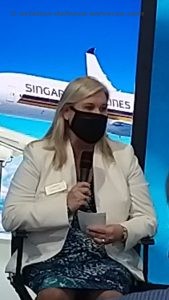
She reiterated that Boeing is working with over 275 suppliers in India who manufacture critical systems and components, including aerostructures, wire harness, composites, forgings, avionics mission systems and ground support equipment, for some of Boeing’s most advanced commercial and defence aircraft. This speaks strongly for the technical expertise and capability of the Indian indigenous industry and its capability to maintain international standards.
India is an important market for Boeing as the existing fleet of it’s three forces has C-17s, P-8Is, Apaches and Chinooks. On the offer is F/A 18 Super Hornet for the Indian Navy, which is in the process of finalising the fighter aircraft for it’s carrier requirement. “Our successful ski-jump tests conducted in 2020 and extensive simulation studies prove that the F/A-18 can operate from the Indian Navy aircraft carriers and will meet or exceed the STOBAR performance requirements of the Indian Navy. The F/A-18 Super Hornet was specifically designed from its inception for carrier operations,” said Randy Rotte, Senior Director of Business Development for India, Southeast Asia and Asia Pacific at the press conference.
“The Block III Super Hornet comes with advanced networking and open architecture design that allow it to work jointly with the Indian Navy’s P-8I and other US-origin assets and rapidly accept new technology to stay ahead of emerging threats.” he added.

Stressing on the various advantages of the Super Hornet he informed that one of the main benefits of this is that the F/A-18 has the ability to fold its wings, allowing for better utilization of deck space on the aircraft carrier. He explained that the manufacturer has developed a capability specifically for the F/A-18 Super Hornet that will allow for the faster movement of the aircraft between the flight deck and hangar deck without having to remove or modify any part of the aircraft. This capability is compatible with the current elevator/lift configuration aboard Indian aircraft carriers.
Boeing officials feel that the Super Hornet has an affordable acquisition cost and also costs less per flight hour to operate than any other tactical aircraft in the US forces inventory, including single engine fighters. This is possible because the fighter is designed for ease of maintainability and offers impressive durability. Hence it will be an asset to the Indian Navy and not a liability. They stressed that Boeing will build on the success of its existing defence programmes that Boeing is executing for the Indian Air Force and Indian Navy today to deliver complete value over the lifecycle of the Super Hornet by developing capabilities that can sustain the platform in India with its proposed ‘By India-For India’ sustainment programme.
“India will also benefit from scale efficiencies that come from commonality in engines since the Super Hornet is powered by the GE F-414 engine, the same family of engines that is powering India’s indigenous Light Combat Aircraft,” he added.
Boeing ended the media interaction on a positive note that customers across Asia Pacific have placed their trust in Boeing to help sustain and upgrade their fleets, support high operational readiness rates, expand parts availability, and maximize partnerships with local industry.
